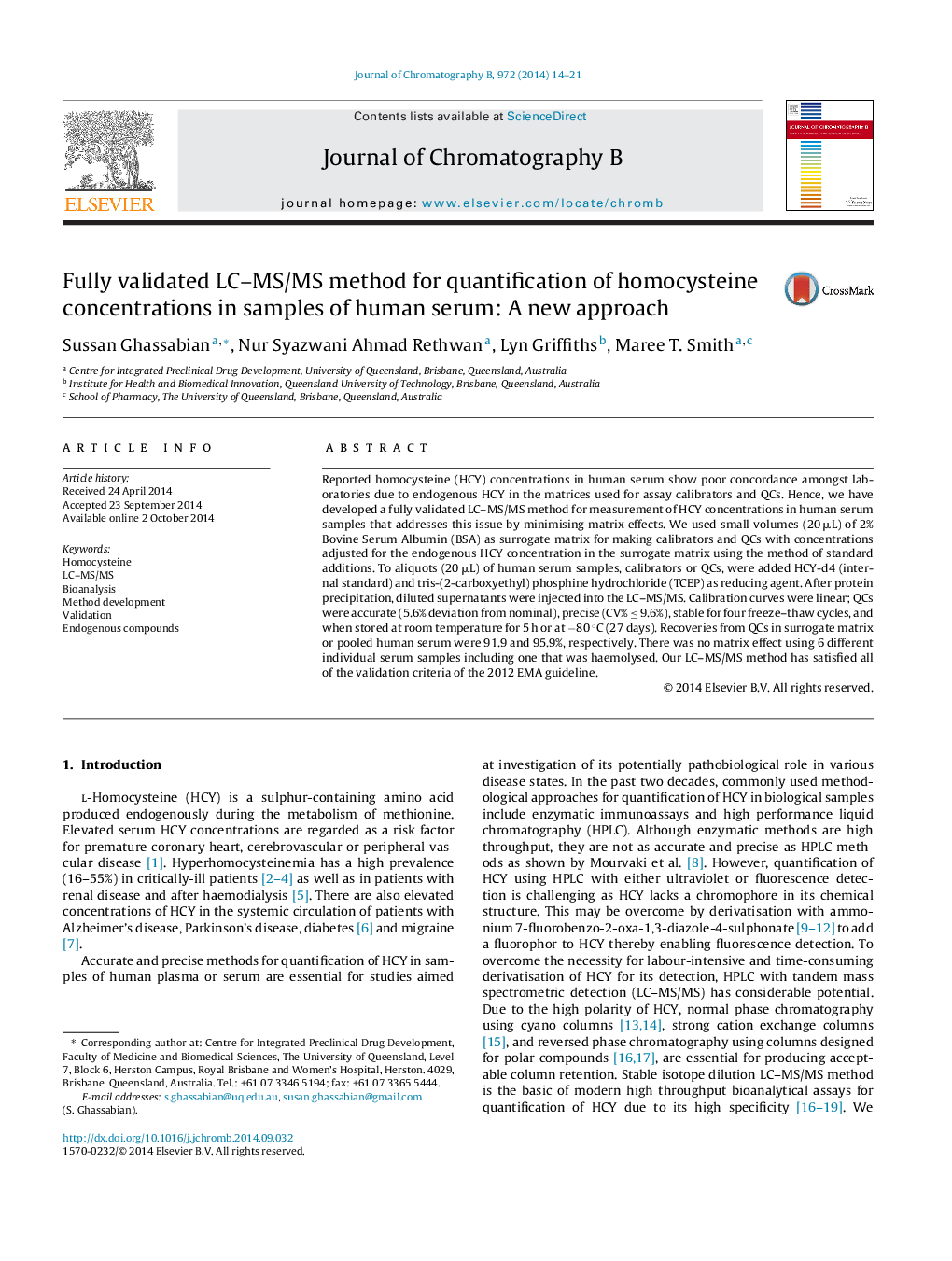| Article ID | Journal | Published Year | Pages | File Type |
|---|---|---|---|---|
| 1215513 | Journal of Chromatography B | 2014 | 8 Pages |
•The existing LC–MS/MS methods have been modified and improved.•New approach for quantification of endogenous compounds was introduced.•Calibrators were prepared in a surrogate matrix without significant matrix effect.•QCs in both 2% BSA and human serum have been used throughout of the validation.•The Bioanalytical method has been validated based on the EMEA guideline (2012).
Reported homocysteine (HCY) concentrations in human serum show poor concordance amongst laboratories due to endogenous HCY in the matrices used for assay calibrators and QCs. Hence, we have developed a fully validated LC–MS/MS method for measurement of HCY concentrations in human serum samples that addresses this issue by minimising matrix effects. We used small volumes (20 μL) of 2% Bovine Serum Albumin (BSA) as surrogate matrix for making calibrators and QCs with concentrations adjusted for the endogenous HCY concentration in the surrogate matrix using the method of standard additions. To aliquots (20 μL) of human serum samples, calibrators or QCs, were added HCY-d4 (internal standard) and tris-(2-carboxyethyl) phosphine hydrochloride (TCEP) as reducing agent. After protein precipitation, diluted supernatants were injected into the LC–MS/MS. Calibration curves were linear; QCs were accurate (5.6% deviation from nominal), precise (CV% ≤ 9.6%), stable for four freeze–thaw cycles, and when stored at room temperature for 5 h or at −80 °C (27 days). Recoveries from QCs in surrogate matrix or pooled human serum were 91.9 and 95.9%, respectively. There was no matrix effect using 6 different individual serum samples including one that was haemolysed. Our LC–MS/MS method has satisfied all of the validation criteria of the 2012 EMA guideline.
